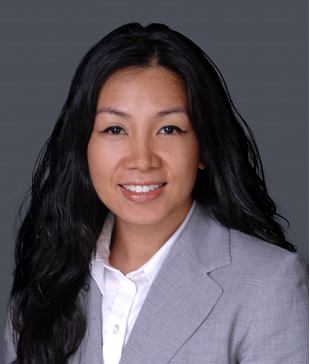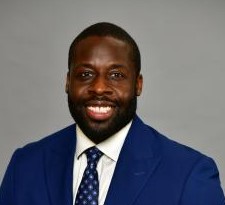One theme that emerged at the recent "Emerging Legal Technology Forum" was that there needs to be a balance between using data and offering a personal touch in client relationships
TORONTO — Since the start of the COVID-19 pandemic, a shift has occurred in how clients and their law firms interact. What was once a regular set of in-person meetings suddenly shifted to a calendar filled with Zoom calls, and although some in-person meetings have resumed, the mix between the in-person and virtual has been irrevocably altered.
At the same time, a parade of collaboration technologies such as Microsoft Teams and Slack began to take even more prominence, creating new touchpoints for law firms to track and measure.
The result has seen an explosion of customer relationship data to help firms make decisions and better establish connections with their clients. In order to best take advantage of this new paradigm, however, it’s still important to utilize both this new data as well as a more traditional, personal touch, said panelists at the Thomson Reuters Institute’s recent 5th annual Emerging Legal Technology Forum. The key, of course, is finding the right balance.
The data in hand
Joy Cruz, Director of Business Intelligence & Data Analytics at management consulting company RSM US, said during the Forum’s panel, Ascendant Engineering: Emergent Techniques in Data Analytics and Strategic Account Management, that some of the common metrics that law firms should be using to measure their client relationships haven’t changed: profitability, productivity, client satisfaction, realization rates, and related data “bringing that whole story together in terms of understanding what you have, what you’re doing, how you operate historically, [and] what you can do.”
But what’s different since the pandemic is that data sources have exploded, meaning that even knowing where all of the necessary data resides is an even harder challenge than ever before. For a law firm trying to gather a response for an RFP, 85% of the time may be spent hunting for the relevant answers, Cruz estimated. And while many law firms are talking about executing a data plan, many firms can’t even take the first step of having insight into their data.

“The goal is to flip that so it becomes easily accessible to you.” Cruz explained. “One of the things we’re missing is that we’re not able to do the analysis piece yet, because it’s not available to you.” Indeed, without the data gathering step, “you’re making decisions based off of data that’s provided to you, but that might not be the full story,” she added.
Panelist Olalekan (Wole) Akinremi, a partner at law firm Deeth Williams Wall, noted that from his days on the corporate side, clients have already begun to take that step in evaluating their outside firms — particularly when it comes to tracking costs. He said that tech-enabled analysis can better look into outside counsel time and billing, contracts, and automation to free up time for more complex matters that are becoming more commonplace. Law firms also can take cues from their clients about how to use data to augment their arguments, Akinremi noted.
For example, “you can also go to management and say, we have two paralegals handling 1,000 requests, we need more support,” he said. “The proof is in the results.”
With the rise in data-driven decision-making, however, can come a tantalizing misstep: Over-reliance on data at the expense of other tools in the relationship-building toolbox. Panelist Philipp Thurner, CEO of relationship management software company Nexl, said that while raw data figures certainly help, “that might not tell you the quality of the relationship.
“Data can tell a story,” Thurner added. “But you can have one data set and can tell a million different stories from it.”
Thurner gave the example of counting email interactions: a hundred emails back and forth between a firm and their client could be construed as a strong relationship, particularly if those emails are increasing over time. But if those emails are surface-level interactions or about administrative tasks, the raw number may not reveal a relationship on rocky ground. “How do you judge a relationship?” he asked. “I think it’s up to us as human beings.”
Where data & relationships collide
In a later panel, titled Journey’s End: Maximizing Value in Client Experience, the discussion elaborated on that general premise. Suzanne Donnels, Chief Business Development & Marketing Officer at law firm Davies Ward Phillips & Vineberg, said she has noticed a difference between corporate clients who are actively involved in the firm/client relationship, and those purely focusing on data. “It’s harder for Davies to compete when you’re dealing with procurement departments, [because] they’re just looking at a number next to a name,” she explained, adding that a closer relationship means differentiation with “understanding their clients and the business that they’re in, and really figuring out solutions.”

Panelist Janet Sullivan, eDiscovery Counsel and Global Director of Practice Technology at White & Case, agreed with Donnels, noting that success metrics will inherently be different for different clients. Her firm’s strategy is called LIFT — Local Information, Firmwide Transformation — which establishes a standardized firm goal of how to drive success, but with the flexibility for bespoke solutions for each client.
To actually measure whether a firm relationship is successful, Sullivan said that repeat business is of course important, but that is just the baseline metric. What can set a firm apart, she said, is consistently gauging and collecting those success metrics throughout the life of a matter. “Not waiting until the end to say, ‘How did I do?’, then having to do a post-mortem and go back to all the things we might have done wrong.”
Sullivan admitted that it can be a fine line between asking for this data while not placing an undue burden on the client; however, there’s more than one way to tackle the issue depending on the type of data that’s needed.
However, panelist Fernando Garcia, who has served as General Counsel for a number of smaller legal departments, noted that law firms should approach this process with caution because of the time and personnel resources needed, as well as another hidden danger in soliciting client feedback.
Firms then need to respond to what they’ve learned, Garcia explained. “Be careful when you ask,” he said. “Because you’re going to get answers, and you have to act on those answers when you get them.”







